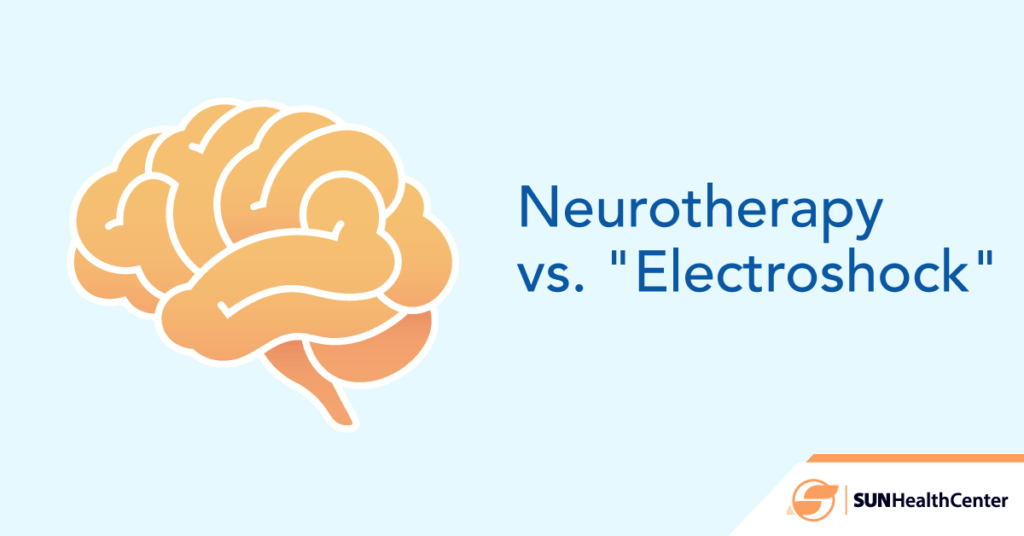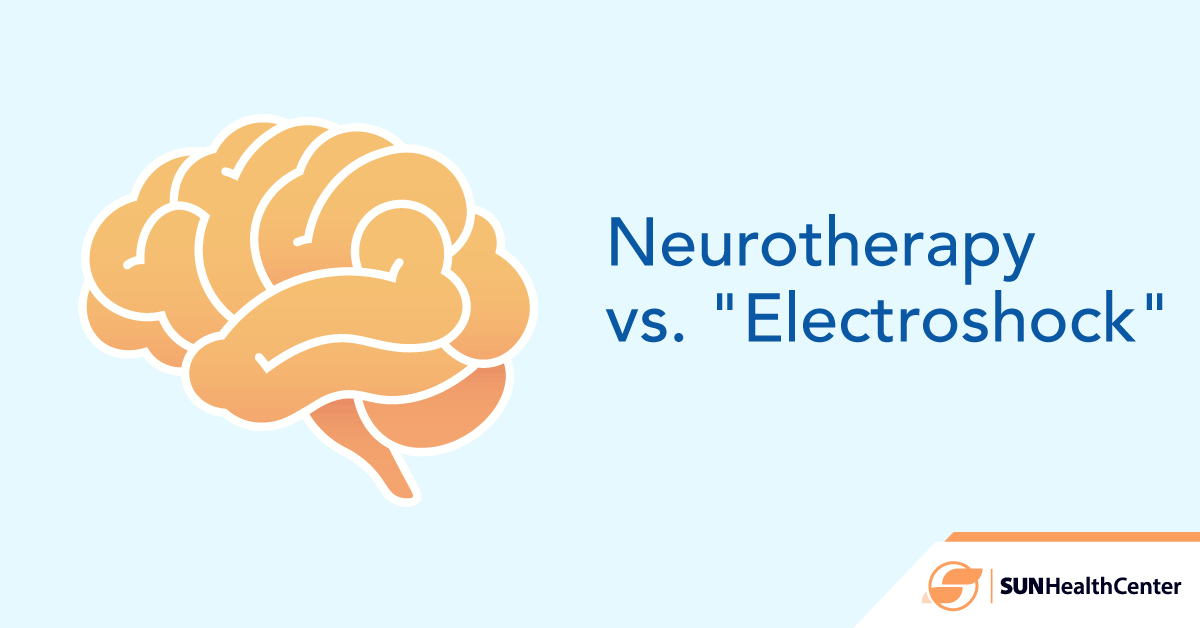

The term “electroshock” conjures up images of Jack Nicholson convulsing and moaning in One Flew Over the Cuckoo’s Nest. Although modern electroconvulsive therapy (ECT) is much less barbaric, many patients and treatment professionals are hesitant to use it due to its poor reputation.
Neurotherapy offers a gentler alternative to ECT, making it a useful treatment for anxiety, attention deficit hyperactivity disorder, depression, bipolar disorder and schizophrenia. Learn what neurotherapy is and find out how it differs from brain electric shock therapy.
Introduction to Neurotherapy
Many people with mental health conditions struggle to regulate their behavior and emotions. Neurotherapy addresses these symptoms by providing real-time feedback in the form of neurostimulation. Some treatment professionals use electrical current, while others use electromagnetic pulses. Both types of feedback help create new connections between brain cells.
The FDA-approved treatment helps improve brain function, which may help with the following:
- Self-regulation
- Attention
- Emotional stability
- Relaxation
Types of Neurostimulation
ECT is a type of neurostimulation, but it’s not the only type available. If you decide to pursue neurotherapy, your treatment professional may offer vagus nerve stimulation or repetitive transcranial magnetic stimulation (TMS) to help you manage your symptoms.
Vagus Nerve Stimulation (VNS)
The vagus nerve, which runs from your brainstem down to your abdomen, controls many important functions. For example, it regulates digestion and helps you maintain a normal heart rate. The vagus nerve also plays a role in the body’s response to stress. Therefore, stimulating this nerve helps your body relax, making VNS helpful for individuals with severe depression.
VNS typically requires a surgical procedure to implant a small device in the chest. The device, known as a pulse generator, delivers electrical pulses to the vagus nerve. Eventually, the electrical pulses travel from the vagus nerve to the brain.
VNS doesn’t improve depression symptoms overnight. It may take a few months to notice a difference.
Repetitive Transcranial Magnetic Stimulation (rTMS)
Repetitive transcranial magnetic stimulation uses electromagnetic impulses to stimulate the brain. One of the main differences between rTMS and ECT is that rTMS targets a specific area of the brain, giving treatment professionals more control over the results. Additionally, rTMS doesn’t require any surgery or anesthesia.
During the procedure, a treatment professional holds an electromagnetic coil against the head. Placement of the coil depends on what condition the patient has. For example, if someone is struggling with depression, the coil goes near the prefrontal cortex of the brain, which plays an important role in regulating emotions. The coil delivers short electromagnetic impulses, causing the individual to feel a tapping sensation on the head. Once these pulses pass through the skull, they produce a weak electrical current, stimulating the brain.
Overview of Electroconvulsive (Electroshock) Therapy (ECT)
Electroshock therapy, commonly called ECT, uses electrodes to deliver an electric shock to the brain. Initially, treatment professionals used several hundred volts of electricity at a time, causing patients to have grand mal seizures during their ECT sessions. ECT also used to cause amnesia and other undesirable side effects.
Modern ECT isn’t like what you see in One Flew Over the Cuckoo’s Nest, but it does have some adverse effects, such as headaches, confusion, fatigue and short-term memory loss.
Key Differences Between Neurotherapy and ECT
Neurotherapy and ECT have the same purpose, but they differ from each other in three key ways.
1. Need for Anesthesia
One of the biggest differences between neurotherapy and ECT is that a patient must receive general anesthesia before undergoing electroshock treatment. General anesthesia has risks of its own, such as nerve damage, breathing problems and allergic reactions, making ECT more dangerous than neurotherapy. Neurostimulation doesn’t require anesthesia or sedation, reducing the risks associated with treatment.
2. Treatment Options
Another difference between neurotherapy and ECT is that neurotherapy helps with a much broader range of conditions. ECT is generally reserved for depression that doesn’t respond to medications or other forms of treatment. In contrast, neurotherapy helps with anxiety, ADHD, schizophrenia, bipolar disorder and other mental health conditions. If you have problems regulating your behavior or emotions, you may benefit from receiving neurotherapy.
3. Risks and Side Effects
Both treatments have side effects, but the side effects of neurotherapy are less severe than the side effects of ECT. For example, some people develop retrograde amnesia after undergoing ECT for severe depression. Retrograde amnesia isn’t like the short-term memory loss associated with neurotherapy. Instead, it causes you to forget events that happened months or even years before your treatment session.
Benefits and Risks of Neurotherapy
Neurotherapy isn’t without risk, but it’s less risky than ECT. For example, some forms of neurotherapy increase the risk of seizures. With ECT, seizures are inevitable. Certain types of neurotherapy may also cause physical side effects, such as headaches, tingling or lightheadedness.
To reduce the risks of neurotherapy, work only with licensed treatment providers. Some companies sell electrostimulation devices for home use, but these devices aren’t as safe as the ones used by health care professionals.
Benefits and Risks of ECT
After an ECT session, you may experience headaches, jaw pain and muscle aches. You may even have to take muscle relaxers, pain relievers or other medications to reduce discomfort. As mentioned earlier, ECT may also cause retrograde amnesia, short-term memory loss or confusion. In some cases, confusion persists for several days, making it difficult for an individual who receives ECT to keep up with their professional obligations.
Choosing the Right Treatment for Mental Health
Neurotherapy offers several advantages over ECT, such as fewer side effects and the ability to avoid general anesthesia. It also treats a much wider range of mental health conditions, making it more versatile than ECT.
If you’ve been struggling with depression, anxiety or another mental health problem, you don’t have to suffer in silence. Sun Health Center has compassionate treatment professionals available to listen to your needs and develop a customized plan for your recovery. Contact us today to learn how neurotherapy can help you improve your mental health.
